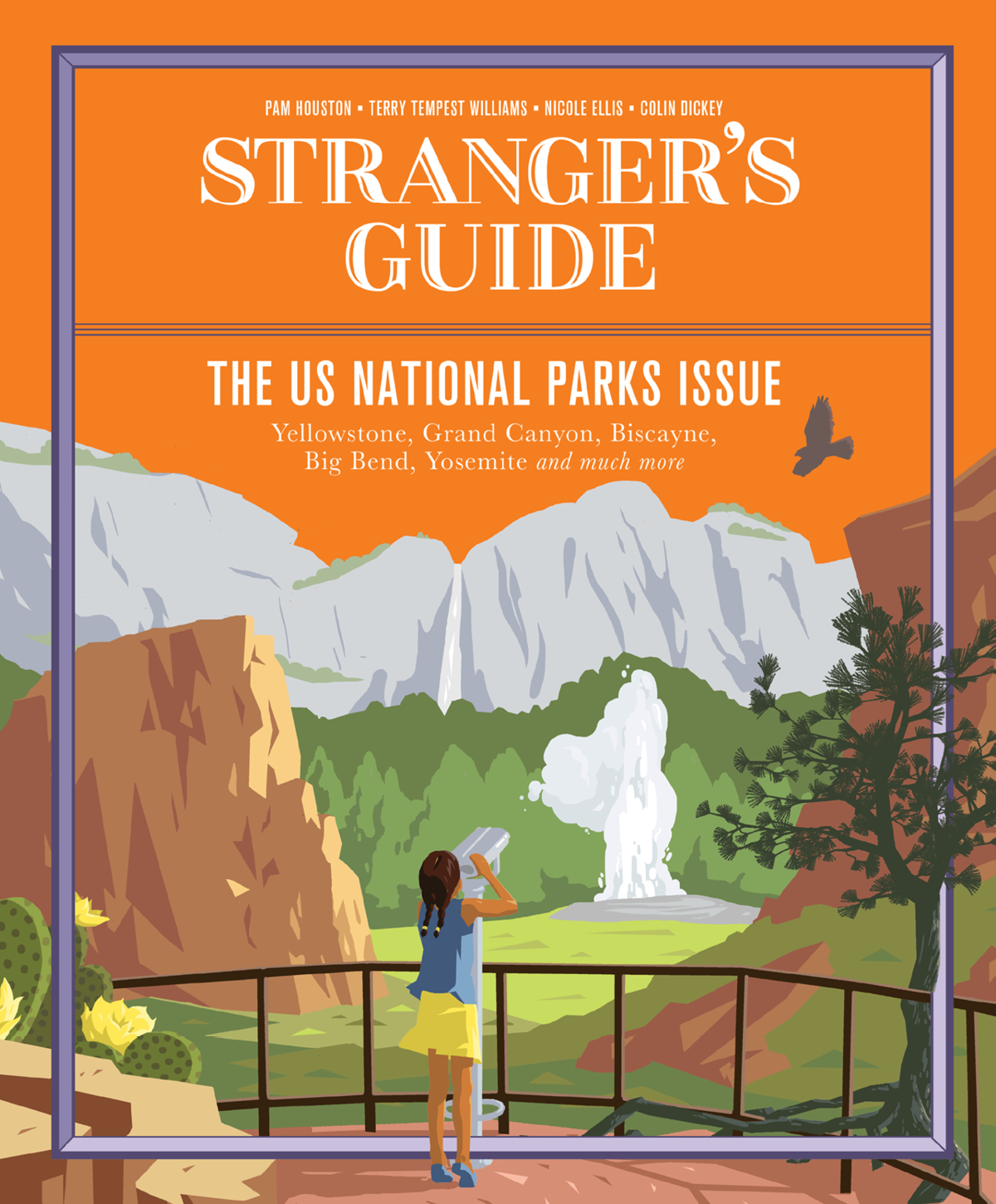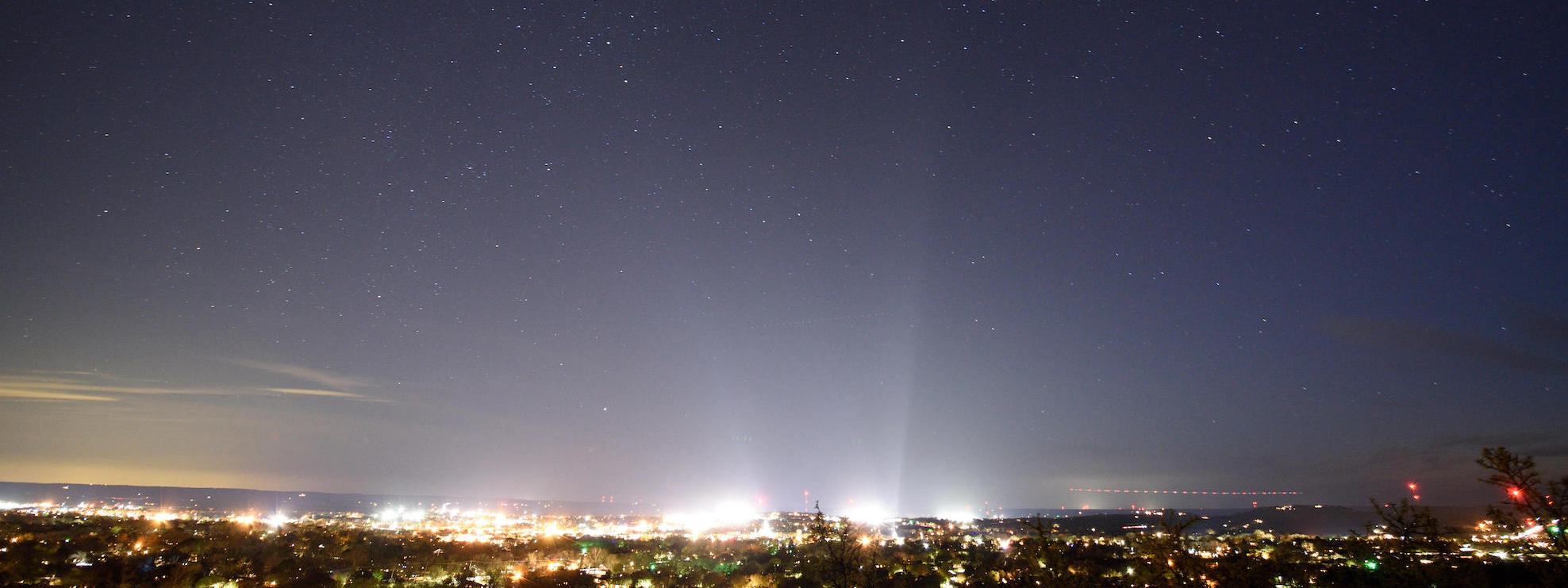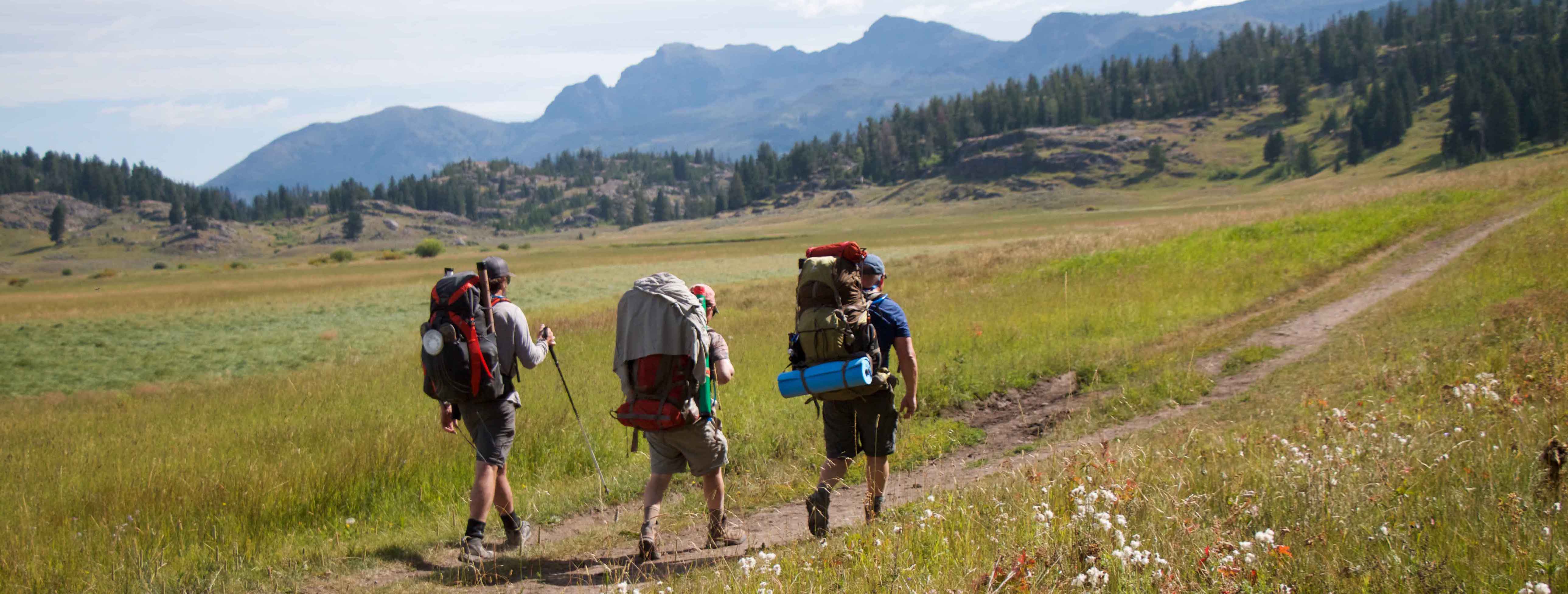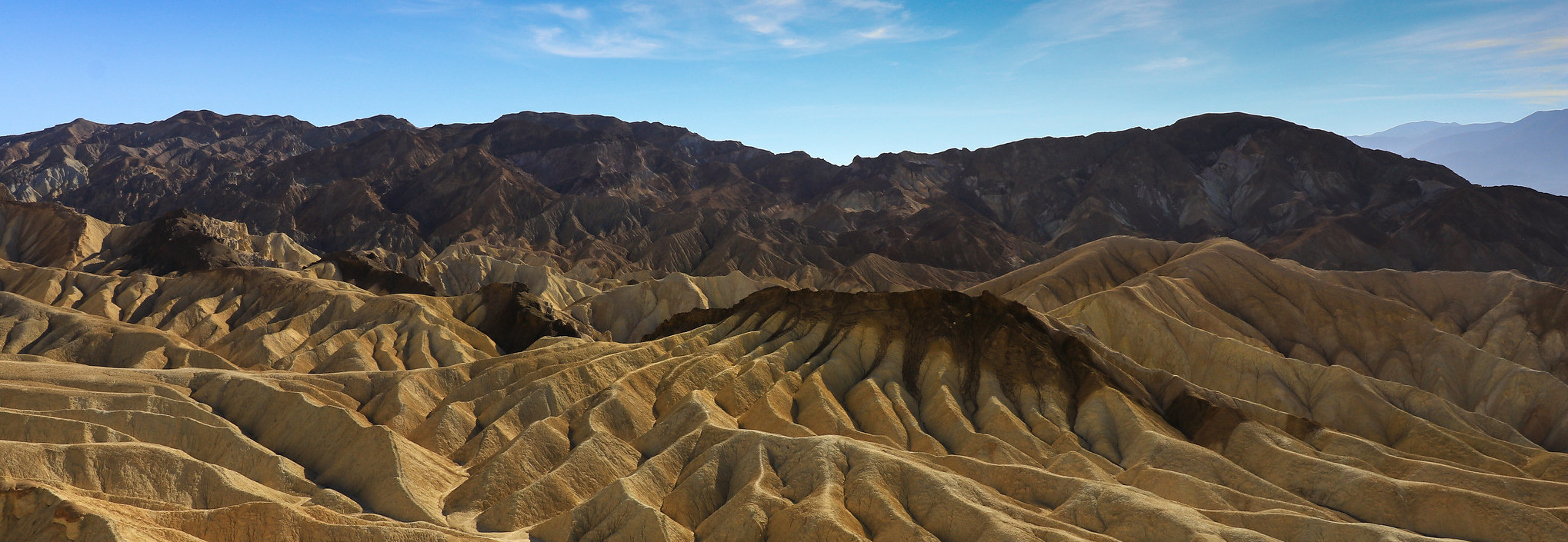
On a late spring evening, I am walking through Joshua Tree National Park with Ken Layne, founder and editor of the Desert Oracle—a publication and radio broadcast devoted to the landscape Layne loves—to talk about the ghosts and visionaries who inhabit the Southern California desert. As the sun sets against the yuccas, we talk about why the desert seems to always attract hermits, artists and strange visionaries.
“Any place that is remote because it has not been hospitable to the cultivation of the land is going to have the potential,” says Layne, for some kind of wonder, mysticism or cult weirdness. It’s not just the isolation of the desert, though; the proximity to civilization is also key. You need that exchange of ideas, of fresh blood going into and coming out of the wilds. “The most remote wildernesses that are still relatively close to where the action is—that’s going to be it,” Layne says. And there’s perhaps no place on earth more like this than the national parks of Southern California.
Cut off from development by both climate and protected status, Joshua Tree and Death Valley serve as counterpoints to the nearby metropolises of Los Angeles and Las Vegas—the eerie sense of endless isolation belies the closeness of these cities. Every year, millions of pilgrims make the trek to these deserts. In 2018, Joshua Tree saw 2.9 million visitors, a 3 percent increase over the previous year, while Death Valley had 1.7 million visitors in 2018, up from 1.3 million in 2017.
Increased traffic perpetually threatens the delicate balance here. As Layne and I walked along the dirt paths of Joshua Tree, he showed me how an ATV tire tread that veered just a few inches off a path can break the crust of the desert, starting a slow but inevitable process of erosion. To a newcomer, the desert appears invincible and immutable—surely the thing that can kill you so dispassionately cannot itself be killed. But its vulnerability is always right there, below the surface.
The deserts of Southern California are dreaming places where one comes face to face with the sublime desolation of nature. Just inside the southern entrance of Death Valley National Park is Zabriskie Point, a mesa overlooking a spread of alluvial fans that gave Michelangelo Antonioni the name of his 1970 cult film. (“In that portion of the film,” Antonioni once explained, “I needed to surround the characters with a lunar-type landscape, to suggest solitude.”) Other films, including Spartacus and Robinson Crusoe on Mars, were also filmed here, and in 1975, philosopher Michel Foucault dropped LSD in the desert for the first time, an experience that he claimed profoundly changed his life and his thinking.
Here, on the outskirts of these national deserts, is where you find the dreamers.
Look closely and you’ll see that the desert is dotted with strange outposts forged by sun-blasted visionaries. Near the Salton Sea is Salvation Mountain, a glorious work of folk art by Leonard Knight, who moved out here to devote his life to painting an elaborate Technicolor love letter to Jesus. Further out in Joshua Tree, you’ll find a series of boulders with gnomic sayings carved on them by John Samuelson (“GOD MADE MAN BUT HENRY FORD PUT WHEELS UNDER ‘EM”), who lived here before killing two men in a bar fight and being declared insane. But of all the strange outposts in these deserts, none are quite like the Amargosa Opera House. Sitting at the southeastern tip of Death Valley National Park, it embodies all of the possibilities, the strangeness, the fragility of this arid dreamland.
•••
Death Valley Junction began life as a company town for the Pacific Coast Borax Company. At one point, the Tonopah and Tidewater Railroad connected to a branch line out to the borax deposits of the company’s Lila C. Mine in nearby Ryan; the borax was brought back to Death Valley Junction, where it was ground and roasted 24 hours a day. A 1920 Harper’s piece by Zane Gray spoke of “intolerable” conditions in which men could last only six months before they “killed themselves outright or impaired their strength, and when they were gone or rendered useless others were found to take their places.” The article embarrassed the company enough that, in 1924, it built a civic center for its workers, including sleeping quarters, a gymnasium and billiard hall, an ice cream parlor and a meeting hall that was known as Corkhill Hall. But the mine closed down three years later, and the Pacific Coast Borax Company left Death Valley Junction, turning its civic center into a hotel. After the Tonopah and Tidewater removed its rails, though, the visitors dried up and Death Valley Junction—no longer a junction—became a ghost town.
It was in this sorry state when, in 1967, Marta Becket discovered it. Born in New York City in 1924, Becket had trained as a ballet dancer from an early age and, by her teens, had already found success working at Radio City Music Hall and on Broadway. She performed in Showboat, A Tree Grows in Brooklyn and other productions, and by the 1960s, she was touring the country. It was a difficult life; she later wrote how she’d started to feel “unused,” struggling to find audiences for an art that had fallen out of fashion in the 1960s.
During a vacation in Death Valley National Park, she and her husband got a flat tire; they managed to get the car to Death Valley Junction, and while her husband set about repairing the tire, Marta wandered over to the ruins of Corkhill Hall. “There was a hole in the back door, through which I tried to peer inside,” she later recalled. “A few sunbeams pierced the dark interior. Finally my eyes were able to make out a small stage with faded calico curtains hanging from a track. Debris was strewn all over the warped floor boards and several rows of wooden benches faced the stage. Some old roller skates lay up front, and directly at the foot of the sunbeam was a doll’s head with its blue glass eyes staring back at me. Pockets of dust and sand provided a backdrop for kangaroo rats and desert spiders.”
But in that debris, Becket saw the possibilities of a life: “As I peered through the tiny hole, I had the distinct feeling that I was looking at the other half of myself. The building seemed to be saying, ‘Take me … Do something with me … I offer you life.’” Within a year, she had returned. She rented out the entire town for $45 a month and transformed the dilapidated civic center into a hotel, and Corkhill Hall into a stage for her work—the Amargosa Opera House.
Becket began performing her one-woman show there in early 1968. Attendance was sparse; sometimes, she’d perform to just a handful of people, and sometimes, she’d perform to an empty room. “To stay ready to perform, I must dance whether there is an audience or not,” she wrote in her memoir. “The important thing for me now was to do my thing. Whether anything would come of it was not important.” Three nights a week, she put on her performances, wearing costumes she’d designed and sewn herself, in front of backdrops she’d painted herself.
In a bid to make the theater slightly less lonely, particularly for those days when she danced alone, Becket spent four years painting an elaborate trompe l’oeil panorama covering the walls of the theater. The walls depict a sixteenth century Spanish court, complete with box seats where a king and queen are surrounded by nobles, clergy, peasants, bullfighters, courtesans and cats. A series of vignettes are woven into the paintings, adding drama, including one of a young man drop- ping a love letter to his beloved. Above it all, the ceiling is covered in billowy white clouds and plump cherubs. Even when no living patrons took in her show, these painted figures kept her company, night after night.
She described her new home as having an “invisible wall” that seemed to surround it, “impenetrable, creating a retreat from today.” Tourists, locals and curious onlookers came and went, but Becket’s devotion to her practice remained steadfast. If there was any kind of invisible force field, it was generated by her single-minded focus on her work and her refusal to be shaped by anyone else.
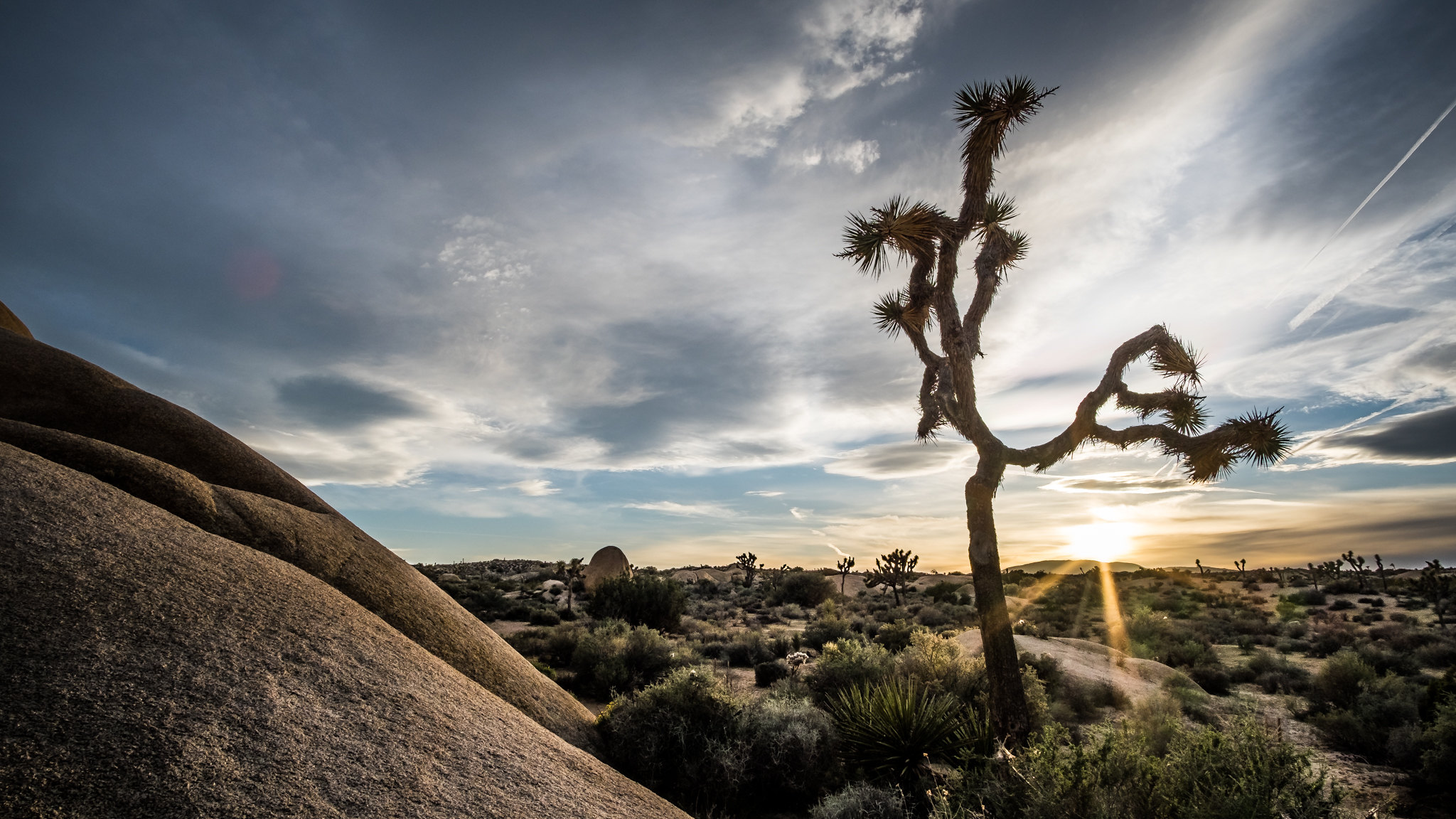
The Amargosa Opera House doesn’t shout at you like Samuelson’s rocks or Knight’s mountain; Marta Becket was never one for proselytizing. To enter her theater feels very much as though you are entering her mind—you are surrounded by a living work of art that is both her body in motion and the murals on the walls. It feels like stepping into someone’s dream.
If it all sounds like something out of a David Lynch movie, it is: the director used the hotel’s exteriors for the final sequence in his 1997 film Lost Highway. But focusing just on the surreal and haunting nature of the place doesn’t do justice to the sweetness and generosity of it—the gift of performance, and the impact one artist can have on the next generation.
• • •
My first trip to the Amargosa Opera House was in 2016. I knew it had a reputation of being haunted, and I made it a point, where possible, to stay in haunted hotels. It was February, and there was a light dusting of snow on the higher mountains on the drive from Las Vegas. The lobby was filled with small clusters of campers on their way in and out of the national park. For someone who has spent days sleeping in a tent in the desert, the lodgings here might well feel opulent—there’s indoor plumbing, after all, and beds. The walls of the hotel are lined with more of Becket’s murals—a line of portraits of various characters, perhaps based on real people and perhaps existing only in her imagination, as well as a trompe l’oeil indoor patio.
I knew that Becket had retired a few years ago—Parkinson’s had made dancing impossible, and in her final years, she’d done her shows seated onstage, telling stories and doing puppet shows. Her final show was in 2012, so I was surprised when I arrived to see the sign outside the theater that read PERFORMANCE TONIGHT.
Jenna McClintock was 6 years old when her family, on vacation in Death Valley in 1982, happened upon the Amargosa Opera House and a performance by Becket. McClintock returned to her home in Oakland obsessed, begging her parents to let her take ballet classes. By age 14, she joined the Oakland Ballet Company, and she has spent her adult life dancing. She returned to Death Valley Junction in 2014, meeting Becket for the first time since that first childhood encounter. Sensing a kindred spirit, Becket invited her to the desert, and for the next two and a half years, McClintock performed onstage at the Opera House, recreating Becket’s original dances.
That winter night, along with a dozen other patrons, I watched McClintock bring Becket’s dances to life as Marta herself watched from the front row. McClintock has worked hard to perfect Becket’s creations, which means that her performance feels both timeless and anachronistic. The ballet gestures that were fading from fashion when Becket arrived here in the 1960s are now distinctly from another time. There is something distantly melancholic about the solo piano accompaniment, punctuated only by the old floorboards bowing every time McClintock takes a small jump. (A nonprofit in Death Valley Junction is working to keep the buildings from decaying.) The costumes are original—McClintock spent months mending them—but even repaired, they speak of the passage of time. The only things that don’t seem from some distant era are McClintock’s smile and the light in her eyes, which overflow with the joy and gratitude at being up on this stage on this night.
If the experience here was once dynamic, however, it now is about preservation. McClintock has not come here to do her own work, but to replicate Becket’s as closely as possible. To sit in that audience is to be arrested, motionless among motionless trompe l’oeil figures all around you, frozen in time even in the presence of such movement.
• • •
It may be that the age of California’s desert mystics has passed. People like Becket found fame at a time when you might simply happen upon a strange event and not know what you’d found. Word of mouth and the occasional news story helped keep such places alive, but relative isolation also allowed them to flourish. Like the unique species that evolve on distant islands, the desert’s vastness bred strange pockets of iconoclasts unbothered by what was happening elsewhere.
I reached out to management not long after to see if I could interview Becket, but I received no response. Then, in January of 2017, she died. By that time, McClintock was no longer performing at the Opera House (though she would return for brief engagements), and the precarity of the situation was apparent. Even before Becket’s death, the Opera House and the charitable trust that ran it struggled with bills, taxes and the natural environment. The ravages of the desert have made the structures increasingly tenuous, and the Opera House may need the help of a philanthropist or foundation to help it resolve its problems. But all of this seems to magnify a central issue: the loss of the Amargosa’s guiding light and creative force. Utopias, like the desert, appear to endure, until you scratch the surface.
Yet those concerns seemed far away as I watched McClintock’s performance. The desert was cool and dry, the theater warm, and the audience was aware of the gift it was being given. Onstage, a dancer channeled her inspiration, moving silently, her feet barely touching the ground—the ghost of a ghost in this haunted place.
• • •
Here, on the outskirts of these national deserts, is where you find the dreamers. Fifteen miles from the west entrance to Joshua Tree is Landers, California, home to Giant Rock and George Van Tassel’s Integratron. The aptly-named Giant Rock stands seven stories tall, a mammoth beacon in the desert. In the 1930s, a miner from Virginia, Frank Critzer, claimed to find some glass-lined tunnels under the rock. He dug out an underground apartment near the tunnels, living a mostly harmless if eccentric life. But in 1942, three Riverside county deputy sheriffs—fearing that he was a German spy—attempted to raid his subterranean home. When Critzer wouldn’t emerge, they tossed a gas grenade into his apartment, which in turn set off a store of Critzer’s dynamite, killing him.
Van Tassel, Critzer’s friend, had originally come to Southern California to work in the aviation industry, but after Critzer’s death, Van Tassel felt the pull of the desert and moved out to Giant Rock. He and his family maintained the airstrip Critzer had built and ran a café called Come On Inn, but within a few years, George said he began receiving messages from extraterrestrials. In weekly meditation sessions, he began communicating with what he called “The Council of 12,” a group of aliens from Venus. The Venusians told him—among other things—that long ago, their ancestors had come to Earth, where they had mated with subhuman apes and produced mankind.
Whatever you may think of this cosmogony now, it was popular enough in the 1950s to allow Van Tassel to build a substantial name for himself, and he began hosting annual conventions for other UFO Contactees at Giant Rock. Each year, hundreds, sometimes thousands, of believers congregated and shared their experiences with Martians, Venusians and other visitors, and discussed what they held in store for humanity.
The Integratron was Van Tassel’s great ambition: a nearly 40-foot-high dome, some 55 feet in diameter, that Van Tassel claimed could restore dead human cells and enable time travel. The purpose of the Integratron was to generate electrostatic energy that, he claimed, could suspend the laws of gravity. Van Tassel began work on it in 1953, building it entirely out of fiberglass and wood, without nails or anything that might interfere with its conductive properties. It remained unfinished when he died in 1978. But the Integratron lives on. It has never been fully operational, so Van Tassel’s claims of time travel and anti-gravity remain untested; its current owners instead advertise it as a “resonant tabernacle and energy machine sited on a powerful geomagnetic vortex” and offer “sound baths” in which participants are treated to 30 minutes of a live performance of quartz crystal bowls—“each one keyed to the energy centers or chakras of the body.” The results of this experience are “waves of peace, heightened awareness, and relaxation of the mind and body.” Reservations are required—the Integratron is usually booked weeks in advance.
If the Amargosa Opera House’s story shows how hard it is to maintain a singular vision against the ravages of time and the desert, the Integratron’s longevity in the wake of VanTassel’s death shows how much easier it is to adapt one eccentric’s vision to new times. Stripped of talk of Venusians and weird interspecies cominglings, the Integratron was easily adapted to Southern California’s New Age and wellness culture, rebranding itself as an unusual spa retreat.
• • •
Death Valley, Becket said in 2012, “has nothing to do with death. It’s big open spaces and the freedom to be free.” But as Ken Layne suggested, it’s not just the big open spaces; it’s that perfect mix of proximity and distance that’s most fruitful for breeding strangeness. Death Valley and Joshua Tree exist for their serene desolation, their welcoming isolation. In the parks themselves, rangers and ecologists focus on conservation, on protecting these serene and undeveloped landscapes for future generations. They draw urban dwellers by the carloads—most of whom just take in the scenery and the heat before heading back to their climate-controlled lives.
Every so often, though, the desert grabs someone and doesn’t let go. They take up root on the edges, where—just outside the parks’ gatesa different kind of ecosystem flourishes.

